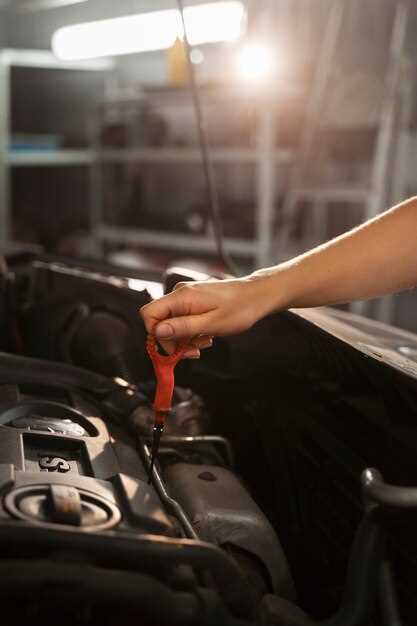
When it comes to vehicle safety, the importance of brake fluid cannot be overstated. It serves as a critical component in the hydraulic system, allowing your brakes to function effectively and ensuring you can stop your vehicle promptly. Failing to select the correct brake fluid can lead to diminished performance and potentially dangerous situations on the road.
Brake fluids are categorized primarily into two types: DOT and Non-DOT fluids. The Department of Transportation (DOT) standards categorize brake fluids based on their chemical properties and performance characteristics. Choosing the right type for your vehicle is vital, as using incompatible fluids can result in reduced braking effectiveness or even damage to the braking system.
Furthermore, it is essential to consider the boiling point of the brake fluid. High-performance vehicles may require fluids with higher boiling points to withstand increased temperatures created during aggressive driving conditions. Regularly checking the quality of your brake fluid and replacing it as needed is a crucial step in maintaining optimal brake performance.
In this article, we will explore the different types of brake fluid, their specifications, and how to determine the best option for your vehicle. Taking the time to make an informed decision on brake fluid can significantly enhance your vehicle’s safety and performance.
Understanding Brake Fluid Types and Their Specifications

Brake fluids are critical for ensuring the safety and efficiency of vehicular braking systems. They are categorized primarily into two types: DOT (Department of Transportation) fluids and mineral oil-based fluids. Understanding these types and their specifications is essential for vehicle owners.
The most common brake fluids are DOT 3, DOT 4, and DOT 5. DOT 3 is glycol-ether-based and is suitable for most vehicles with standard braking systems. It has a minimum boiling point of 205°C (401°F) and absorbs moisture over time, which can lead to brake failure if not replaced regularly.
DOT 4 also uses a glycol-ether base but features a higher boiling point of 230°C (446°F), making it more suitable for vehicles that undergo rigorous driving conditions, like heavy-duty trucks and performance cars. This fluid absorbs water slightly more slowly than DOT 3 but still requires regular changes to maintain braking efficiency.
DOT 5 is silicon-based, which means it does not absorb moisture, making it ideal for vehicles that are stored for long periods. It has a boiling point of approximately 260°C (500°F) but is not compatible with systems that previously used glycol-based fluids. Therefore, careful consideration must be taken before switching to DOT 5.
Each brake fluid type is also assigned a grade based on its performance characteristics. The viscosity, lubricating properties, and thermal stability are key factors in these specifications. For example, the viscosity must remain stable under extreme conditions to ensure the brake system functions effectively.
Moreover, all brake fluids have a moisture absorption rating which indicates how quickly they can absorb water. This affects their boiling point and overall performance, making it vital to check these specifications while choosing brake fluid for your vehicle.
In summary, understanding brake fluid types–DOT 3, DOT 4, and DOT 5–and their specific characteristics is essential for maintaining vehicle safety. Regular inspection and timely replacement can significantly enhance overall braking performance and longevity.
Identifying Signs Indicating a Brake Fluid Change
Regular maintenance of your vehicle’s braking system is crucial for safety and performance. One important aspect to monitor is the condition of your brake fluid. Here are several signs that indicate it may be time for a brake fluid change.
One of the most noticeable signs is a change in the fluid’s color. Fresh brake fluid is typically clear or light amber, but over time, it can become dark or muddy. This discoloration results from moisture absorption and contaminants, which compromise the fluid’s effectiveness.
Another key indicator is the presence of a spongy or soft brake pedal. If you notice that your brake pedal feels less responsive or sinks to the floor, the brake fluid may be contaminated or have absorbed too much moisture. This condition can negatively affect your vehicle’s stopping power.
Increased brake response time can also signal a need for fluid replacement. If it takes longer than usual for your brakes to engage, this sluggish response could mean that your brake fluid is losing its hydraulic properties, which can compromise braking efficiency.
Pay attention to warning lights on your dashboard as well. Many modern vehicles are equipped with indicators that alert you to potential issues with the braking system, including low brake fluid levels. If this light illuminates, checking and potentially changing the brake fluid should be a priority.
Lastly, consider the age of your brake fluid. Even if no immediate symptoms are present, brake fluid should be replaced according to your vehicle manufacturer’s recommendations, typically every two years. Regularly scheduled maintenance can help prevent issues before they arise.
Properly Testing and Storing Brake Fluid for Longevity

Maintaining the integrity of brake fluid is crucial for optimal vehicle performance and safety. Regular testing and proper storage help ensure that the fluid remains effective over time.
Testing Brake Fluid is essential to determine whether it still meets safety and operational standards. One common method for testing brake fluid is checking its moisture content, as absorbed water can significantly reduce the fluid’s boiling point, leading to brake failure. A brake fluid tester, which measures the moisture percentage, is a handy tool for this purpose. Many mechanics recommend testing brake fluid every two years or as per the manufacturer’s guidance. If the moisture content exceeds 3-4%, it’s time to replace the fluid.
Furthermore, checking for fluid discoloration or the presence of particles can indicate contamination. Fresh brake fluid is typically clear or slightly yellowish; any darkening may suggest contamination. If the fluid appears murky or has visible deposits, it should be replaced immediately.
Storing Brake Fluid properly is vital for preserving its quality. Brake fluid should be kept in its original, sealed container to prevent contamination and moisture absorption. Choose a cool, dry location away from direct sunlight and temperature extremes, as heat can degrade the fluid’s effectiveness over time.
Always ensure that the storage area is free from corrosive materials. Regularly check the storage container for any signs of damage or leakage. Once opened, brake fluid should be used within a specified time, generally recommended within six months to a year, depending on the manufacturer’s instructions. Ensure the lid is tightly sealed after each use to limit exposure to air and moisture.
In conclusion, routinely testing and appropriately storing brake fluid are critical steps in maintaining vehicle safety and performance. By adhering to these practices, vehicle owners can enhance the longevity and reliability of their brake systems.




